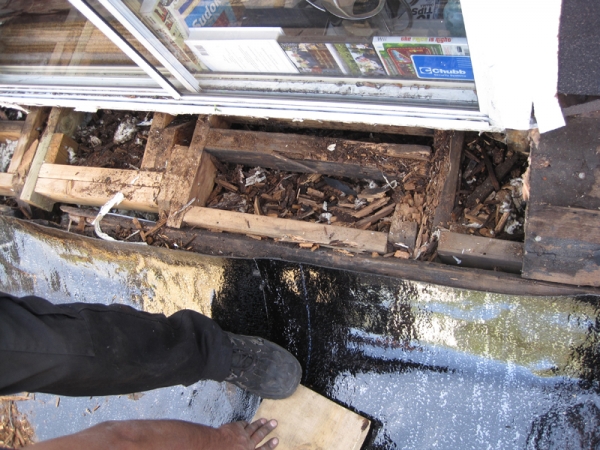To repair the problem we removed the rotten wood in the door step and rebuilt a new door step. We then ran the rubber base membrane over the rebuilt step extending the rubber as far as possible towards the door. Subsequently, we installed the rubber cap membrane over the base running it as far as we could under the door. Ideally, if possible the door should be removed, the membrane extended under the door and then the door should be re-installed over the membrane. In this circumstance it was sufficient enough to run the rubber cap under the door step and lower the cost to our client. We then installed a metal flashing that extended a few inches under the door to protect the membrane on the door step. Finally, we caulked the area where the door step and door meet. The metal flashing serves the other purpose of allowing the caulking to have a solid surface to me applied to. The caulking now rests against the metal flashing on the door step and the door. If the flashing was not installed and caulking applied onto the rubber cap the granules on the cap would eventually loosen as discussed and so would the caulking, eventually leading to leakage.
To finish the project aesthetically we covered all the existing wooden frames and fascia which featured wood with peeling white paint with black aluminum flashing. We also installed new a new eavesthrough and downspout. The charcoal cap on the flat roof, black laminated asphalt shingles and black aluminum flashing match nicely for a clean look.






